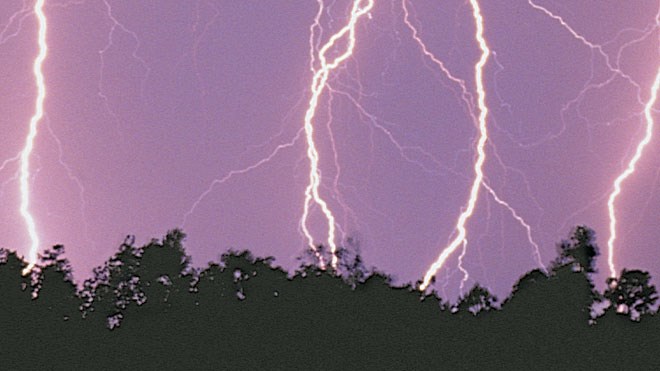NEWS RELEASE
ENVIRONMENT CANADA
*************************
As we head into the summer outdoor recreation season, lightning awareness becomes ever more important, and Environment and Climate Change Canada has research and tools to help prepare Canadians.
Many lightning injuries can be avoided by knowing when to take action and what to do.
For instance, the majority of injuries and fatalities are not caused by a direct lightning strike but by ground current and side flash events.
These effects can be seen on our video, Lightning Safety on the Soccer Field on the Lightning in Canada (http://www.ec.gc.ca/foudre-lightning/) website.
The video also helps soccer players and sports enthusiasts learn how to stay safe when there is a threat of lightning near their location, by using the Canadian Lightning Danger Map (CLDM).
The Canadian Lightning Danger Map displays high-risk lightning areas in red, with animation showing the movement of the storms.
These maps are updated at 10 minute intervals and are based on recent lightning observations. The CLDM can be found on weather.gc.ca and is accessible on mobile devices.
If you realize you are in a lightning danger area, either by hearing thunder or seeing red on the CLDM, take shelter immediately, preferably in a house or all-metal vehicle (not convertible top).
Do not shelter under a tree. Lightning tends to strike taller objects. Remember, there is no safe place outdoors during a thunderstorm. When thunder roars, go indoors!
Research shows that two-thirds of damaging lightning strikes occur when the storm is not directly above the victim but is approaching or has just passed by.
High speed photography indicates that the atmosphere near a thunderstorm becomes electrified creating additional risk. So when planning outdoor activities this summer, it is important to listen to weather forecasts, weather alerts, and to keep an eye on the sky as weather conditions can change quickly.
Please contact your regional Warning Preparedness Meteorologist if you have questions or need more information on Lightning Safety Week, on the Canadian Lightning Danger Map or Lightning in Canada.
Warning Preparedness Meteorologist: 1-866-672-5463
Lightning in Canada website: http://www.ec.gc.ca/foudre-lightning
Canadian Lightning Danger Maps: http://weather.gc.ca/lightning/index_e.html
Remember the lightning safety rule: When thunder roars, go indoors!
*************************



